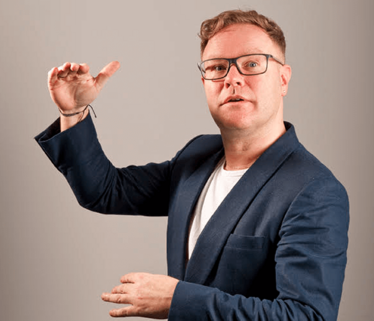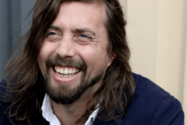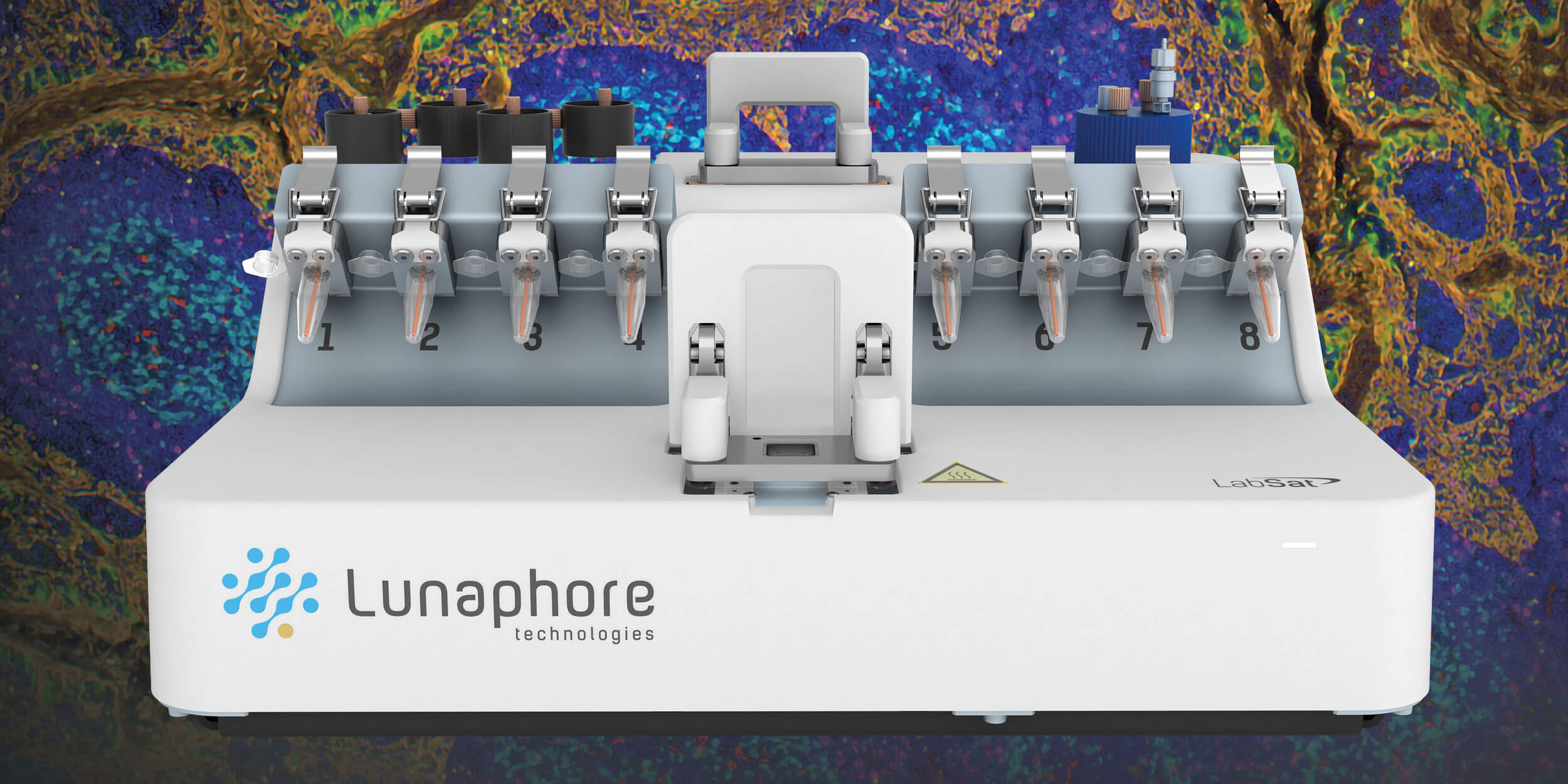
Hurdles and High Jumps – Chapter 5: Investors Invest in People
Chris Lord has taken two companies from startup to exit. Here, he offers a personal glimpse into the realities of funding – and shares several key lessons learned for those wanting to follow in his entrepreneurial footsteps.
Rich Whitworth | | 8 min read | Learning
Presented by The Translational Scientist × Cytiva

In Chapter 3, research scientist-turned-investor Alex de Winter offered his top funding tips in “Show Me the Money!”
But, as we reviewed our survey responses, it’s fair to say that funding was a popular (or should I say, unpopular) high jump that requires additional help to clear. (If you’d like to take part in this interactive article series, the survey is still open, so please share your views and questions.)
When asked about the biggest challenge ahead in their translational research project, one survey respondent wrote: “To obtain any kind of funds/scholarships.”
Another simply replied: “Funding, funding, and funding.”
And so, we return to the topic of funding with entrepreneur Chris Lord, who not only knows how to talk the talk, but has demonstrably walked the walk.
Welcome to Chapter 5!
What’s your personal experience of securing funding in the translational science space?
I fell into life sciences by accident. Around 10 years ago, my business partner and I were exploring disruptive ways to get the world’s one billion smokers into something safer. We were among the first to bring a vaping product to market – and the only ones ever granted a UK medical license for a vaping device and pharma grade e-liquid. That was our first business – CN Creative – which we sold for £40m. And then we built another, Nerudia, creating over 1,000 patented innovations, and selling for around £106m. This was all in the span of eight years. The journey required us to go through a range of fund-raising activities – all culminating in our businesses being acquired.
You make securing funding sound relatively easy…
Well, a basic rule of thumb is that it’s not easy! But know that, to obtain funding, you’ll mainly be selling yourself, your idea, and often – to limit risk – your intellectual property.
In fact, it’s all about risk. Investors need to believe in you as a founder. They need to believe you can deliver the vision and hit the milestones. Even with the best idea and the most brilliant scientific minds, if you’re unproven as an entrepreneur you represent a high risk. And if you’re competing for funding with someone who has already built and sold a business, it can be tough. Trust me on that.
When it comes to funding for medicine and life sciences specifically, the routes are even more narrow as you’re restricted to certain investors that favor that sector.
Ultimately, the parties providing funding are looking to make a return on their investment. Typically, they make this return through an acquisition (although it might be an IPO), so they look for IP that fits with an acquirer’s business plan – or, more specifically, the business plan that they may have in a few years. And that’s hopefully what you are also anticipating. This reality can create some tension; you might have a world-changing discovery, but if it doesn’t help an acquirer deliver financial returns, you’ll struggle to get funding early on. Sadly – to borrow from another sector – no one wants to make lightbulbs that last for a hundred years…
When should translational scientists start thinking about funding?
Well, that’s the $64,000 question, as the saying goes. In a nutshell, my advice is to think about your exit strategy first and the funding you need to get there second. And you probably need to think about both of these aspects before even starting the business in the first place, as both will almost certainly be required to commercialize your idea.
Money speeds things up enormously, so to get to your goal faster, you’ll need more money. And the goal we’re talking about is an exit. Everyone exits their business at some point, so most entrepreneurs are looking to control how they depart via a planned sale. For translational scientists who want to help patients, you need to realize that acquisition might be necessary for your company to achieve its mission.
If you want (or are content) to grow slowly – perhaps organically by reinvesting profit – you may need less or no external funding. On the other hand, if you want – or need – to move fast (for example, to beat a competitor to the punch), you will need funding. (For reference, we sold our first life sciences company within four years – and within 24 months of our first venture capital raise).
When you raise capital, you have milestones designed to prove the concept you have pitched. Often, tranches of money are released once each milestone is reached, and the risk accordingly reduced with each success. For CN Creative, some key success milestones were: a successful clinical trial for the vaping product; successful stability trials of the e-liquid; and ultimately granting of the medical license. Each of these steps vastly increased the chances of the product succeeding in the marketplace – and therefore reducing the investment risk.
Investing money is seriously risky. VCs will take half of your company – enough to make a tidy return, but not so much as to demotivate you. Even so, you and your startup represent a gamble. Sure, you can invest £1m of your own (company’s) money, but then you have no one to share the risk with. And if you fail your clinical trial, you have to wait 12 months to get a new one and you will need enough financial runway to absorb that cost. So, you might give away a chunk of your company, but you also get to share the risk – and likely reach your goal faster.

Meet Your Mentor, Chris Lord
Chris Lord is an entrepreneur with a proven track record. He built two consecutive tech/medicinal companies from start up to successful exit in four years – with a combined exit value of around US$150m.
Can you share more details about your experiences?
Together with my business partner, David Newns, I’ve raised many rounds of funding now – and it gets (a little) easier with experience, but I can remember my first venture capital raise vividly! After numerous trips from our lab in Manchester to offices in London and countless pitches to mainly venture capitalists but also other investors (all of which had politely declined), we had a date with one of the largest VCs in Europe: Advent Life Sciences. In truth, this was our last pitch (and therefore slightly desperate as we had almost run out of money).
Our advisor had said he kept this pitch until last because it was the most important – all the others had allowed us to refine our pitch and learn from them. We didn’t discuss the topic much on the train down; I think we both knew this was our last hope, and we didn’t want to get nervous and therefore fail.
On arrival, they thanked us for coming and invited us to pitch. David is a natural orator. so he typically started our pitches – and often finished them too. He explained our personal history and the background of CN and then followed with a flawless (as usual) overview of what we had done, what we were going to do, and how we were going to get there. He eloquently explained that the reason for the funding was purely to maintain our time advantage over competitors and that, without it, we would and could continue but at a reduced pace. (This was true, though we hadn’t fully figured out how to continue without a cash injection!) He added that we required £2m over the coming 24 months, which didn’t raise an eyebrow.
Our brilliant and helpful would-be investors, Raj and Kaasim, both interrupted politely a couple of times and asked questions, but the pitch went very smoothly. After David, it was my turn. I gave a more detailed explanation of the Nicadex device (which David could also do, but I needed to prove my worth); I have a natural tendency to go into detail and try to pick the right aspect to focus on according to the audience. I felt it was important for me to show a thorough and unparalleled technical understanding so that they knew I was genuinely leading this development from the top (rather than being led by the team I had working for me).
After the pitch we concluded and welcomed any questions. The questions were minimal. But I most distinctly remember Raj turning to Kaasim and saying, “Kaasim, I’ve often told you about spotting guys with a passion and with a clear and precise goal and method of reaching their goal. Watch these two guys, because these two gentlemen are the perfect example of what I’ve been telling you and that’s the reason we are going to invest in them.”
We were unknown and unproven entrepreneurs, but we had managed to convince them.
We nailed it! Raj continued, “Gentlemen, your pitch was excellent and like I’ve just told Kaasim, we are going to invest in you – in you two personally! If you do what you say you are going to do, we will exit in 24 – 36 months for £40 million.” I’ve just got goosebumps saying that because I remember it so vividly and how I felt at the time.
Great story – and some lessons there. What other advice can you offer scientists who may feel less… entrepreneurial?
Not understanding the commercial landscape can make life difficult for scientists. And it’s true that few scientists are also entrepreneurs, but that shouldn’t demotivate them when moving forward. Often, it’s a case of finding the right business partner – someone who has the right knowledge and skills (and experience, if possible). You should be looking for an entrepreneurial character who has a broad range of expertise – indeed, they need to be savvy with all the aspects of the “business,” as well as the science and/or engineering.
Thinking back about our pitch to Advent Life Sciences, it’s clear that investors invest in people. So, make sure you have the right people – they may be critical to your success!
You can read the growing series of Hurdles and High Jumps articles here
Are you enjoying the Hurdles and High Jumps articles? This informative series is just one way Cytiva is working to help translational researchers like you navigate scientific, business, and regulatory challenges.
Joining Cytiva’s translational research community is a great way to stay informed. Tell us a bit about yourself in the form below and you’ll receive relevant resources and guidance for your journey on the path to patients.

Rich Whitworth completed his studies in medical biochemistry at the University of Leicester, UK, in 1998. To cut a long story short, he escaped to Tokyo to spend five years working for the largest English language publisher in Japan. "Carving out a career in the megalopolis that is Tokyo changed my outlook forever. When seeing life through such a kaleidoscopic lens, it's hard not to get truly caught up in the moment." On returning to the UK, after a few false starts with grey, corporate publishers, Rich was snapped up by Texere Publishing, where he spearheaded the editorial development of The Analytical Scientist. "I feel honored to be part of the close-knit team that forged The Analytical Scientist – we've created a very fresh and forward-thinking publication." Rich is now also Content Director of Texere Publishing, the company behind The Analytical Scientist.















